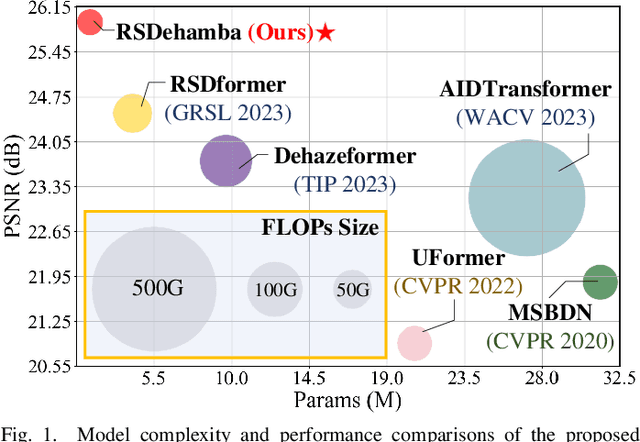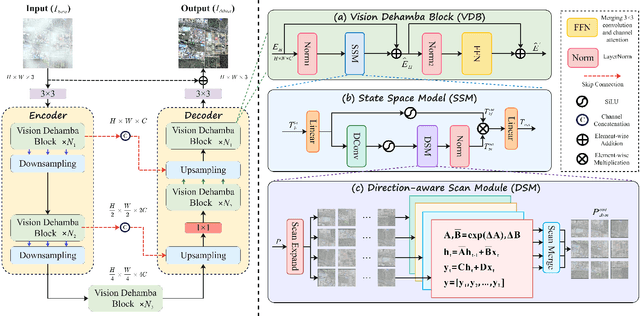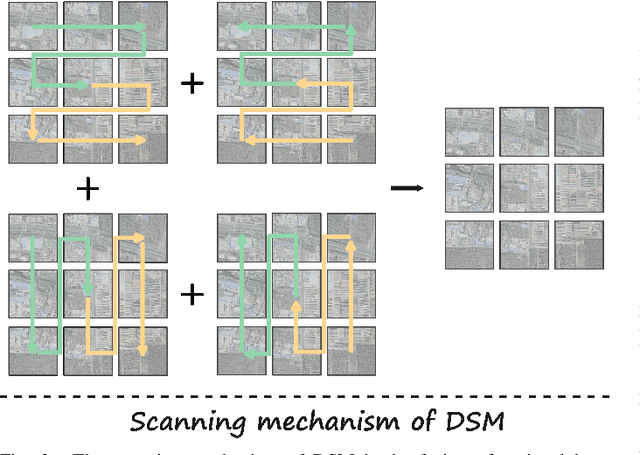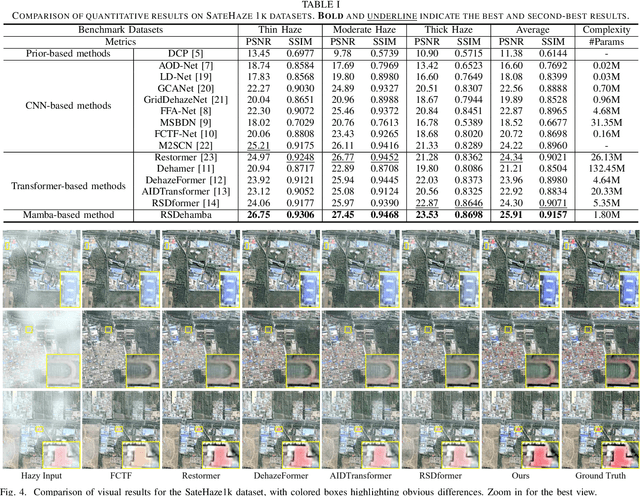RSDehamba: Lightweight Vision Mamba for Remote Sensing Satellite Image Dehazing
Paper and Code
May 16, 2024



Remote sensing image dehazing (RSID) aims to remove nonuniform and physically irregular haze factors for high-quality image restoration. The emergence of CNNs and Transformers has taken extraordinary strides in the RSID arena. However, these methods often struggle to demonstrate the balance of adequate long-range dependency modeling and maintaining computational efficiency. To this end, we propose the first lightweight network on the mamba-based model called RSDhamba in the field of RSID. Greatly inspired by the recent rise of Selective State Space Model (SSM) for its superior performance in modeling linear complexity and remote dependencies, our designed RSDehamba integrates the SSM framework into the U-Net architecture. Specifically, we propose the Vision Dehamba Block (VDB) as the core component of the overall network, which utilizes the linear complexity of SSM to achieve the capability of global context encoding. Simultaneously, the Direction-aware Scan Module (DSM) is designed to dynamically aggregate feature exchanges over different directional domains to effectively enhance the flexibility of sensing the spatially varying distribution of haze. In this way, our RSDhamba fully demonstrates the superiority of spatial distance capture dependencies and channel information exchange for better extraction of haze features. Extensive experimental results on widely used benchmarks validate the surpassing performance of our RSDehamba against existing state-of-the-art methods.
 Add to Chrome
Add to Chrome Add to Firefox
Add to Firefox Add to Edge
Add to Edge